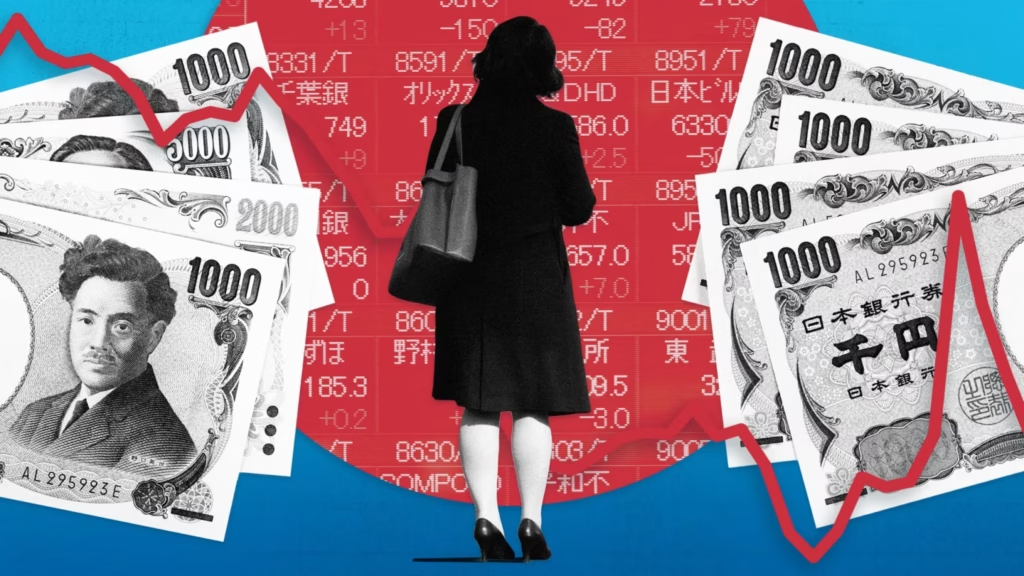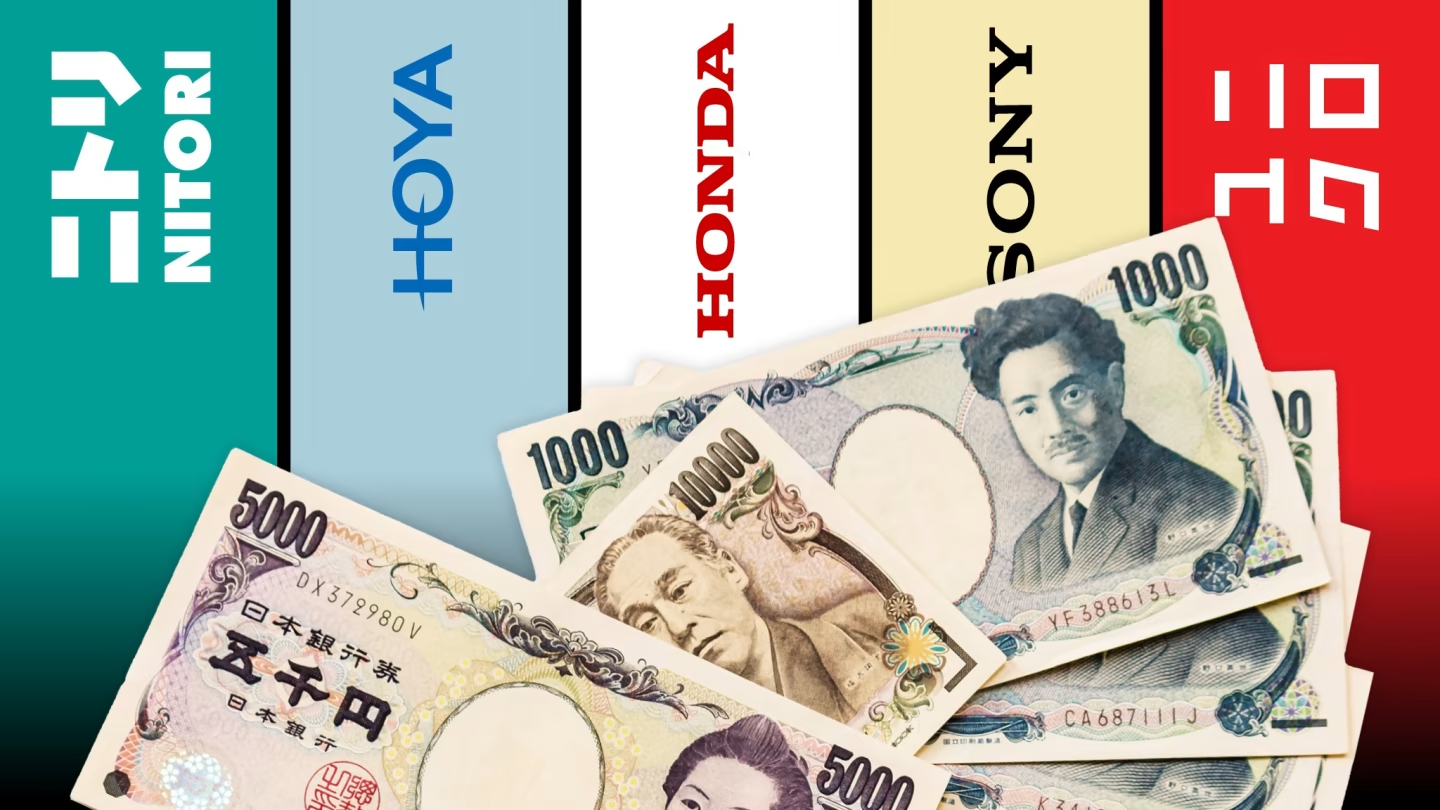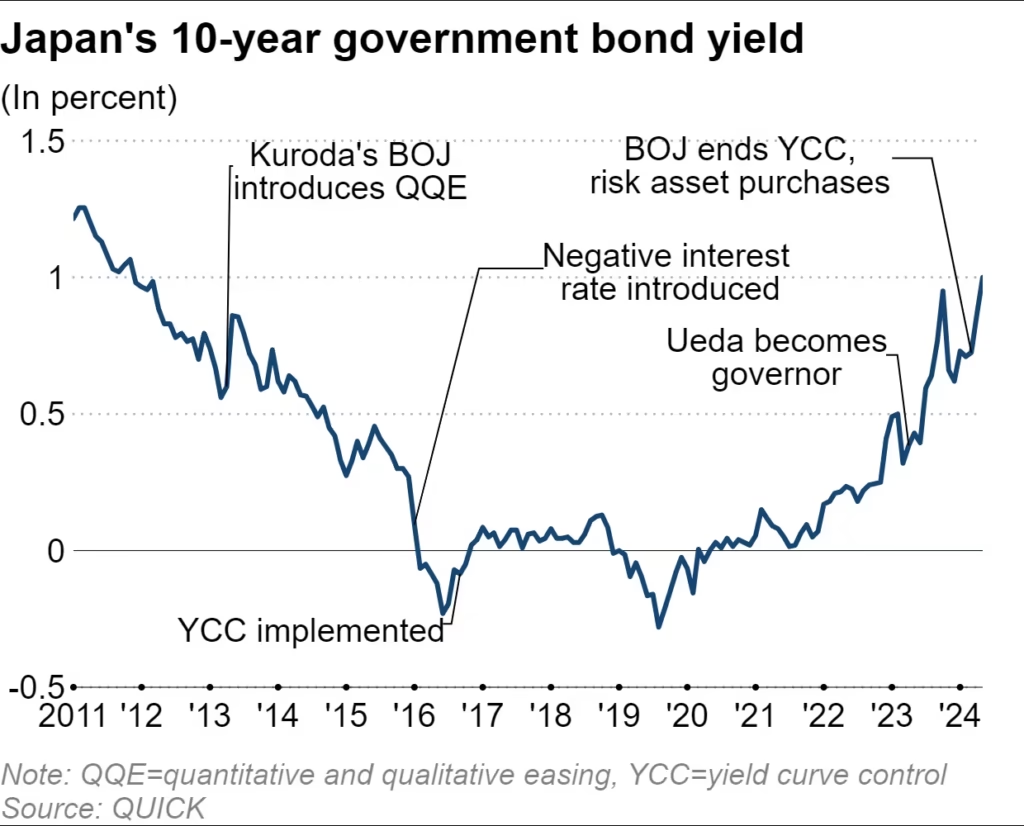Wait—why is the Japanese yen suddenly on a hot streak?
Seriously… what just happened?
Did Japan just pull a power move on the global market?
Why is the dollar falling while the yen’s rising like a comeback story?
If you’re thinking, “I thought the yen was the quiet one in the corner?”
Yeah, same here. Until now.
Something big is brewing — and most people haven’t noticed it yet.
Let’s dive into what’s really going on…
And why the yen might just be the plot twist of 2025.

Table of Contents

1. Last July, the Japanese yen fell hard—down to the equivalent of just $5.91 for 1,000 yen. But now? It’s bounced back to over $6.90 per 1,000 yen. That’s a pretty impressive comeback.
2. A lot of folks are pointing to the unwinding of the “yen carry trade” as the reason behind this. But honestly, we’re not seeing the usual signs of a major unwind just yet.

3. What would really kick off the big shift is Japan’s 30-year government bond yield crossing 2.5%. That’s when things might really get rolling.
4. This isn’t just my guess — this comes from the investment chiefs at big Japanese insurance companies. They’re the ones watching this the closest.
Japan’s Bonds Strike Back: This Time, It’s Real
5. Recently, Japan’s 30-year government bond yield hit 2.59%, then pulled back.
6. That drop after hitting 2.5%? It likely means demand spiked — investors were rushing in.

7. When yields hit that level, a lot of big institutions started saying: “Why risk currency losses in US Treasuries when we can just buy safe Japanese bonds at home?”
8. So instead of buying US bonds with dollars, they bought Japanese bonds with yen. That means less demand for dollars.
9. Less dollar demand means the dollar weakens — and the yen gets stronger. Simple supply and demand.

Dollar vs Yen: Power Shift
10. When people talk about the yen, they’re usually talking about it in comparison to the US dollar.
11. Over the past three months, the dollar was up — it reached 158 yen at one point. But now it’s dropped to around 146. That’s a solid win for team yen.
12. And here’s the kicker: This shift happened even before any big carry trade unwind.
13. It’s probably thanks to a combo of institutions buying Japanese bonds — and one very active group of investors…

Ninja Ants on the Move: Japan’s Big Investor Exodus
14. Ever heard of “Mrs. Watanabe”? That’s the nickname for Japan’s everyday investors — usually moms and retirees — who look for better returns outside of Japan.

15. They’re known for moving serious money.
16. And when they buy US stocks?
17. They’ve got a nickname for that too: “Ninja Ants.” Small but mighty.

18. And they’ve had a big tool to help them invest abroad: a tax-free investment account called NISA — kind of like an IRA in the US

19. NISA was introduced back in 2014. It lets Japanese residents invest without paying the usual 20% tax on gains and dividends from things like stocks and funds.
20. Anyone 18 or older can open a NISA — just one account per person, through banks or investment firms.
21. By early 2024, NISA had exploded in popularity — around 23.2 million accounts had been opened across Japan.

NISA Gets a Makeover, And a Money Flood)
22. In January 2024, NISA got a huge upgrade for its 10-year anniversary.

23. The annual investment cap tripled, from 1.2 million yen (8,000 USD) to 3.6 million yen (24,000 USD)
24. The total cap? Also jumped, from 6 million yen (40,000 USD) to 18 million yen (120,000 USD).
25. Best part? The old 5-year tax-free window was ditched. Now, it’s tax-free for life.
26. With these sweet new terms, about 3 million new NISA accounts popped up in just six months. Total accounts hit over 24 million by mid-2024.
27. And a lot of that money? It went straight into US stocks.
28. In 2024 alone, Japanese investors used NISA to pour around 10.4 trillion yen—roughly 70 billion US dollars—into American markets.
29. That money kept flowing into US stocks right up until March 2025.
30. But toward the end of March? Big-time profit-taking started.

Homecoming: From Wall Street to Tokyo
31. Now here’s the twist — in June 2025, the Japanese government is expected to announce major support for its own stock market.

32. So, Japanese investors who cashed out of US stocks aren’t shifting into US bonds. Instead, they’re bringing that money home, betting on Tokyo’s rebound.
33. And when they bring money back? They’re selling dollars and buying yen.
34. That means more dollars floating around… and less yen.
35. End result? The dollar dips, and the yen gets even stronger. A little economic karma, if you will.

The Yen Moved First — And It’s Already Winning

The yen’s getting stronger — and here’s the kicker: The game hasn’t even officially started.
The big unwinding of yen carry trades? Yeah, that’s still warming up on the sidelines. So what’s driving this early power play? Once Japan’s 30-year bond yield hit that magic 2.5%, Japan’s institutional heavyweights stopped chasing US Treasuries — and started funneling their money back into home turf.
And those “Ninja Ants”? The retail investors who had been riding the US stock wave? They’re quietly heading back to Japan too. What looked like just a ripple… is starting to feel like the first wave of something much bigger.
The yen isn’t just flexing — it’s already making its move.
Discover more from Alphazen Dynamics
Subscribe to get the latest posts sent to your email.



